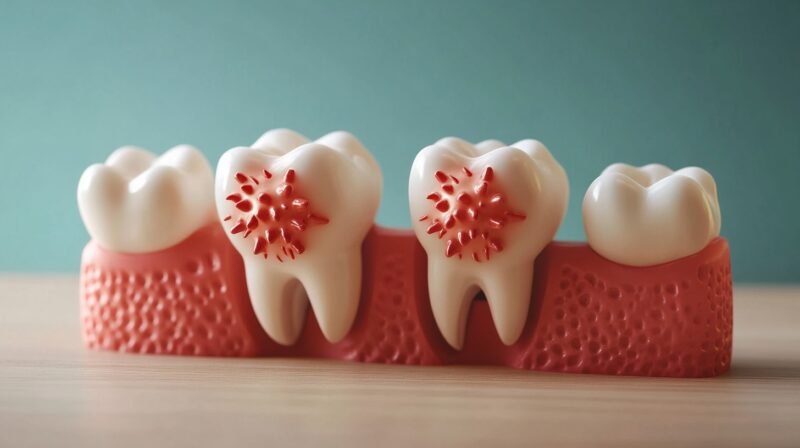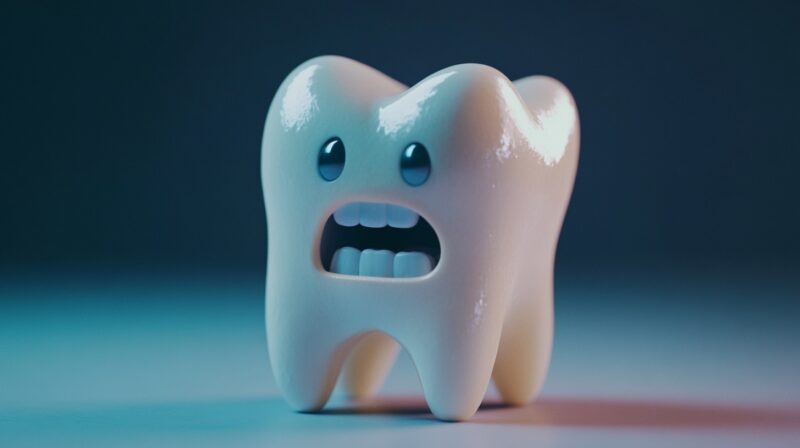A tooth infection occurs when bacteria invade the inner pulp or surrounding tissues, leading to inflammation and pain.
The most common causes include untreated cavities, gum disease, and dental trauma.
While some infections may seem minor at first, they can develop into severe health concerns if left unaddressed.
Early detection and prompt treatment are essential to prevent worsening symptoms and potential complications.
How Long Can a Tooth Infection Go Untreated?
The timeframe for a tooth infection to become dangerous depends on multiple factors, including a person’s immune response, the severity of the infection, and any preexisting health conditions.
While some infections rapidly escalate within days, others may take weeks or even months to reach a critical stage.
However, an untreated infection continues to progress regardless of the presence or absence of symptoms.

- Immune System Strength: Individuals with compromised immune systems, such as those with diabetes or autoimmune diseases, may experience faster progression of the infection.
- Severity of the Initial Infection: A minor cavity left untreated can turn into an abscess in a matter of weeks, while a severely infected tooth may cause complications within days.
- Presence of Symptoms: Pain and swelling may appear early, but in some cases, an infection can grow silently without noticeable discomfort until it reaches a dangerous stage.
- Age and Overall Health: Older individuals or those with poor nutritional intake may have a harder time fighting off bacterial infections.
- Oral Hygiene Practices: Poor dental care increases the likelihood of an infection spreading at a faster rate.
How the Infection Progresses Over Time
Here is a table summarizing how the infection progresses over time:
| Timeframe | Symptoms & Progression |
|---|---|
| First Few Days to a Week | – Initial pain, swelling, and redness appear. – Sensitivity to hot and cold foods may develop. – A mild toothache can turn into persistent throbbing pain. |
| One to Three Weeks | – Infection may spread to the jawbone or surrounding gum tissue. – A visible abscess may form, releasing pus. – Facial swelling may develop, making it difficult to chew or speak. |
| One Month and Beyond | – Infection can reach the bloodstream, leading to fever, chills, and fatigue. – Breathing or swallowing may become difficult if swelling spreads. – Risk of severe complications such as sepsis, Ludwig’s angina, or endocarditis increases. |
Signs That the Infection Is Worsening
Swelling that extends to the face or neck indicates that bacteria are spreading to deeper tissues.
The body’s immune system is reacting to the infection, suggesting it may be entering the bloodstream.
Often a sign that pus is draining from an abscess. A life-threatening symptom requiring immediate medical attention.
Even if pain temporarily subsides, the infection continues to spread internally. Regular dental checkups help detect hidden infections before they escalate into severe health emergencies. Waiting too long to seek care increases the risk of permanent damage, hospitalization, or life-threatening complications.
Early Symptoms of a Tooth Infection
A developing tooth infection often starts with localized discomfort, such as throbbing pain, swelling, and redness around the affected tooth. The gums may appear inflamed, and tenderness can make chewing difficult. Sensitivity to hot or cold foods might also indicate an issue.
As the infection progresses, additional symptoms can arise, including fever, chills, and a general feeling of weakness. Some individuals experience difficulty opening their mouths, swallowing, or breathing, which signals a spreading infection.
A persistent bad taste in the mouth or foul-smelling breath may suggest the presence of pus.
Ignoring early signs allows bacteria to move deeper into surrounding tissues. At this stage, the risk of serious complications increases significantly. Seeking treatment as soon as symptoms appear can prevent the infection from advancing to a more dangerous state.
When you start noticing these early symptoms, you should consult a dentist. If you don’t know where to start looking for the right one, you can find the solution on this site.
What Happens If a Tooth Infection Goes Untreated?

Now let us take a look at what can happen in cases the tooth infection goes untreated.
Localized Complications
If a tooth infection remains untreated, it can lead to severe damage in the affected area. One of the most common complications is an abscess, a pus-filled pocket that forms at the root of the tooth. Abscesses cause intense pain and swelling, sometimes leading to a visible lump on the gums.
As the infection progresses, bacteria can erode the surrounding bone and tissue, weakening the structure that holds the tooth in place. Over time, this can result in tooth loss. The damage may also extend into neighboring teeth, increasing the need for more extensive dental work.
Serious and Life-Threatening Complications
- Sepsis – When bacteria enter the bloodstream, they trigger a life-threatening inflammatory response that can cause organ failure.
- Ludwig’s Angina – This involves severe swelling under the tongue and neck, which can block the airway and make breathing difficult.
- Endocarditis – If bacteria reach the heart, they can infect its inner lining, leading to complications that impact circulation.
- Osteomyelitis – The infection can spread to the bones, causing long-term damage and requiring aggressive treatment.
- Mediastinitis – If bacteria travel into the chest cavity, it can result in serious breathing difficulties and organ dysfunction.
- Brain Abscess – In rare cases, bacteria can move to the brain, leading to swelling and neurological problems that require emergency intervention.
Once a tooth infection reaches this stage, immediate medical care is necessary to prevent permanent health issues or fatal complications.
Risk Factors for Severe Complications
Certain individuals face a higher risk of developing serious complications due to their overall health conditions. A weakened immune system, often caused by diabetes, autoimmune diseases, or cancer, reduces the body’s ability to fight off infection effectively.
Older individuals are more susceptible to complications because their immune response may not be as strong as that of a younger person. Additionally, poor nutrition and malnourishment make it harder for the body to heal, allowing infections to advance more quickly.
Smoking, excessive alcohol consumption, and a history of chronic illnesses also contribute to an increased likelihood of severe outcomes. Anyone with these risk factors should be especially cautious and seek dental care as soon as symptoms arise.
How to Know If the Infection Has Spread
Certain warning signs indicate that a tooth infection has moved past the local area and begun to affect other parts of the body. One of the most serious indicators is a high fever accompanied by chills and sweating.
Rapid breathing, dizziness, and confusion suggest that bacteria may have entered the bloodstream, a condition that requires immediate medical intervention. Swelling that extends into the face or neck can create pressure on the airway, making it difficult to breathe.
Sepsis symptoms, such as a fast heart rate, low blood pressure, and extreme fatigue, signal that the infection has reached a dangerous level. At this stage, hospitalization and intravenous antibiotics are often required to control the spread of bacteria before permanent damage occurs.

- Did you know: Sugar is equally bad for your skin and body as much as it is for your teeth? Try to cut back and not digest it as much if you want healthy skin and teeth!
Summary
A tooth infection may start as a mild inconvenience but can quickly escalate into a severe medical emergency if ignored.
The timeline for complications varies, but once an infection progresses, it can result in dangerous health conditions.
Seeking prompt dental treatment prevents unnecessary pain, potential tooth loss, and life-threatening consequences.

